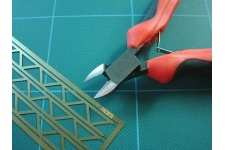Roden 428 Bristol F.2b Fighter Mk IV 1:48 Scale Model Aircraft Kit
1:48 scale plastic model kit from Roden, requires paint and glue.
One of the best airplanes of WWI, “king of the two setters” and the outstanding masterpiece of designer Frank Barnwell, the Bristol F2B Fighter was one of the most widely used types of the last 18 months of the war.
Soon after the proclamation of the Armistice and the signing of the Versailles Treaty, it was declared that WWI was “the war to end all wars”. In that atmosphere of general pacifism the Entente countries witnessed widespread demobilization and their military forces were reorganized.
The future of aviation appeared to be limited thousands of airplanes were scrapped, or sold to other countries. It was considered that aviation was the most appalling weapon of the recent war and there would be little need for it in the future.
This doubtful opinion was not shared by the head of the Royal Air Force, Sir Hugh Trenchard. Despite much criticism from Parliament and various branches of the establishment, he preserved the core of the R.A.F. for the support of the British Empire's power in all its numerous colonies.
At the foundation of the reborn R.A.F. it was largely equipped with two types, which had been developed during wartime: the De Havilland DH9A, and the Bristol F.2B Fighter. At this point in time classical single-seat fighters or strategic bombers had became redundant. Now, aircraft needed to be multipurpose, durable and well regarded from the experience of the last few years, and so the selection of those types was not unexpected.
The F.2B Fighter, which was not always a pure fighter even in the conditions of WWI, in the post-war period became a workhorse in the immense territories of the Empire: these airplanes were to be found in India, the Near and Middle East, in occupied Europe, and in Africa. Year by year, newer and more modern types of airplane appeared, but the Brisfit carried on, undertaking all the thankless tasks, from the suppression of revolts in the colonies to the transportation of mail or humanitarian cargo.
It was only in 1926 that the first new major variant appeared - the Bristol F.2B Fighter Mk II. The changes were more cosmetic than fundamental: machines for the Near East were equipped with tropical radiators and new wheels with wider tyres. For the next modification of the Mk II a new stronger undercarriage was fitted and some secondary features were changed. Later, one more change was made to take it to Mk III standard: a pick up hook was installed for taking mail packages from the ground.
The most important modernization of the type was the rebuild to the Mk IV specification. The main difference was a new mechanical wing which was now equipped with Handley Page slots.
The vertical tail had a much changed outline and the undercarriage was improved. It was visibly different to the original Bristol F.2B Fighter which by now looked like its military grandfather.
In the 1927-28 period when the resources to finance development of new aircraft types were completely lacking, 50 machines of the Mk IV type were produced. And from the outset some of them were built with dual controls and exchanged cockpits specifically for training purposes.
Their service was relatively brief, up until 1931. Nevertheless, it was with some irony that the active service of the dedicated warrior, the Bristol F.2B Fighter, lasted less than two years during WWI, but then for 14 more years more it was nothing so much as a policeman for the Mother country in the distant colonies.
In the middle of 1930, after Hitler was proclaimed as Germany's leader, Great Britain came to its senses and began the urgent modernization of the R.A.F., feeling more and more the threat of a new war in the air.
At the beginning of the 1930s, when modern Spitfires and Hurricanes were in prospect for the R.A.F., and in the air day by day the tension of future conflict grew and grew, in the far colonies of Great Britain the lonely and obsolete old Bristol F.2B Fighter remained in service.
The plane, a product of the WWI era, finally left its place of honor in the front rank of military service 25 years after its first flight.





